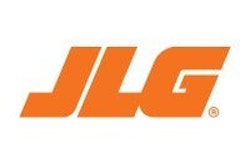It's every rental store owner's nightmare: a phone call that their trailer or equipment came unhitched during transport, causing extensive damage or injury. Fortunately, it's relatively easy to prevent such a phone call - provided the rental store owner and his or her employees understand the potential risks.
"Trailer and towable claims are the most frequent liability claim for rental store owners," says Mike Martinie, vice president of marketing and sales for ARA Insurance Services. "It's been that way for as long as I have been around and that's been a lot of years."
Martinie says that in most claims, the coupler comes off the ball, but the chains hold. The customer realizes something is wrong and hits the brakes. The trailer then slams into the back of the truck or tow vehicle, causing hundreds or thousands of dollars in damage.
Sometimes, however, the chains don't hold. "Now you have a trailer or towable freewheeling down the road, with the potential to run into someone head-on," Martinie says.
Minimizing human error
In theory, the liability for an accident caused by an unhitched trailer rests with the person who connected the trailer or towable to the towing vehicle and/or the person who was driving the vehicle at the time of the accident. In the "deep pocket" world of trial lawyers, however, rental store owners and their insurers can find themselves shelling out money for damages if the jury can be convinced the customer wasn't properly informed of all the risks and safety considerations concerning trailer connections. At the very least, the rental store or its insurance carrier could face significant pretrial costs to prove the customer was at fault.
That said, a proactive policy is the best insurance to avoid legal claims, while vigilance and education are the keys to preventing accidents. Employees should be trained and tested in the proper method for loading the trailer and connecting it to the tow vehicle. Only employees should be allowed to connect the trailer or towable when the customer picks it up at the rental store.
Customers should be discouraged from disconnecting the trailer or towable from the tow vehicle, if possible. In many instances, however, the trailer or towable must be unhitched. At this point, customer education becomes critical, Martinie says, because most trailer/towable claims occur when the customer is bringing the equipment back to the store.
Try as they might to blame the equipment, the trailer or the coupler, in almost every case human error is responsible for mishaps.
"There are four or five different (hitch) designs out there and I haven't seen any of them fail if they are used properly," says Brian Weseman, president of Towmaster Trailers.
Tow vehicles are equipped with one of three different balls – 1 7/8 inches, 2 inches and 2 5/16 inches in diameter. The 2-inch ball is probably the most common, although Weseman says more rental stores are shifting to couplers for the 2 5/16-inch ball because of its increased carrying capacity.
That presents a challenge, because you have to match the size of the ball to the coupler. Distinguishing between the different size balls is difficult to do visually, and dangerous as well. Rental store employees should be trained and retrained to check the diameter number stamped on the ball itself.
"You have to make sure you have the correct mate," says Dave Medbery, national sales manager for JLG Triple-L Trailers. "If you don't, it will come off when you hit a bump."
Properly securing the trailer
Once the coupler and ball have been connected, the next step is to properly secure the safety chains. The chains should be crossed under the ball once; the chain connected to the left side of the trailer should connect to the right side of the truck and the chain connected to the right side of the trailer should connect to the left side of the truck. This "X" configuration provides stability.
"It will help to maintain the trailer's straightness in the event it comes off the ball," Medbery says.
Matching the height of the trailer or towable to the tow vehicle also is important. For most trailers, the distance from the bottom of the coupler tongue to the ground should be approximately 18 inches to minimize swaying, Medbery says. In all cases, the trailer deck should either be level or slightly higher at the end nearest the tow vehicle.
Proper loading is also important. "The equipment should be tied down and should be placed forward on the trailer," Martinie says.
The danger of whipping
Placing the load too far back greatly increases the potential for the trailer to sway rapidly back and forth, which is also known as "fish tailing" or "whipping." A good rule of thumb is to place the load so that 60 percent of its weight is located on the front half of the trailer and no more than 40 percent of its weight is located on the back half of the trailer.
Whipping is probably the greatest danger the driver faces when transporting equipment. "Whipping can take you off the ball," Martinie says. "It can also take you off the road depending on how heavy the load is and how heavy your truck is."
It' s important that customers understand what to do if the trailer starts to whip around. They should not slam on the brakes, even though that might be their first instinct, because sudden braking can increase the whipping motion and flip the trailer.
Instead, they should gradually reduce their speed by taking their foot off the gas pedal and very gradually applying the brakes, if necessary. Once the whipping has stopped, they should pull over to the side of the road and shift more weight to the front of the trailer. If the whipping motion is so severe that it pulls both the truck and trailer off the paved road, the driver should grip the steering wheel firmly, let off the gas pedal until the vehicle is traveling at a speed less than 25 mph, then gradually steer the vehicle back onto the road.
Utility trailers present their own challenges. "People leave the store and you don't know how much or what they are hauling around," Martinie says. Because the potential for claims is high, employees should be sure to tell customers that they cannot use the trailers to haul dirt, rocks, sand, sod, bricks, gravel, lumber, firewood, broken concrete, scrap iron or chemicals.
To help employees and customers minimize the potential for accidents, the American Rental Association offers a video "Winning with Trailer Safety" that outlines many tips for trailer safety. ARA Insurance Services also offers a risk-management program, "Ready to Tow," that includes a safety instruction sheet that can be given to customers, a self-inking checklist stamp that ensures your employees and customers go through basic safety checks, and a safety sticker with the five important reminders that can be affixed to equipment trailers.
Tips & recommendations
Customers should be told to:




















